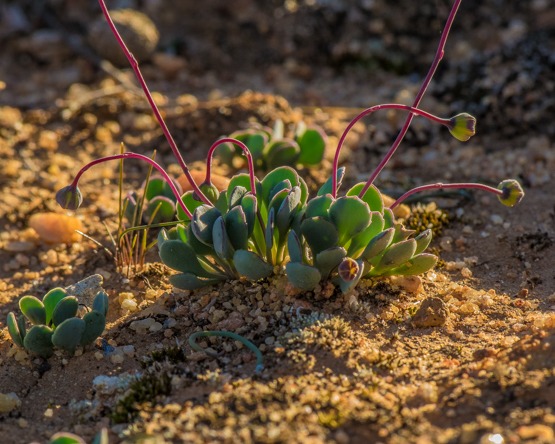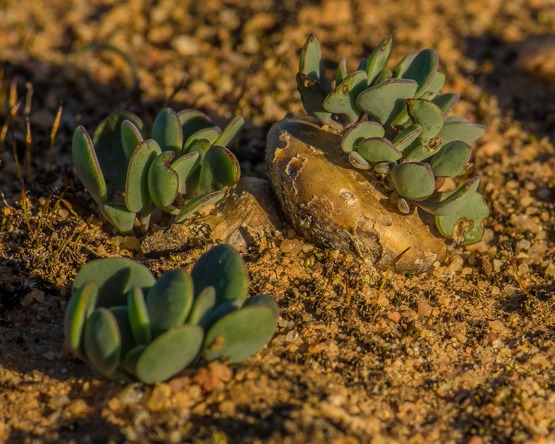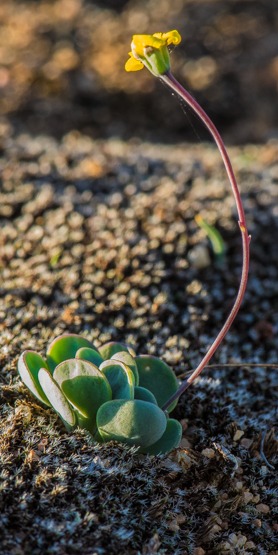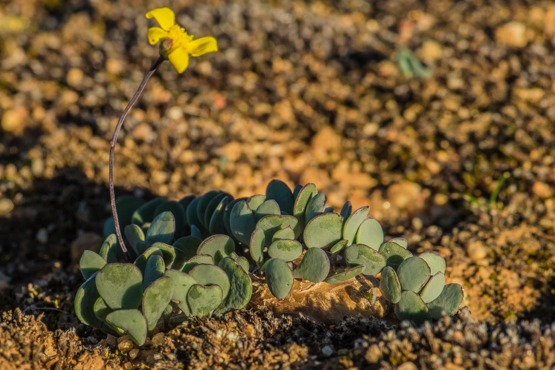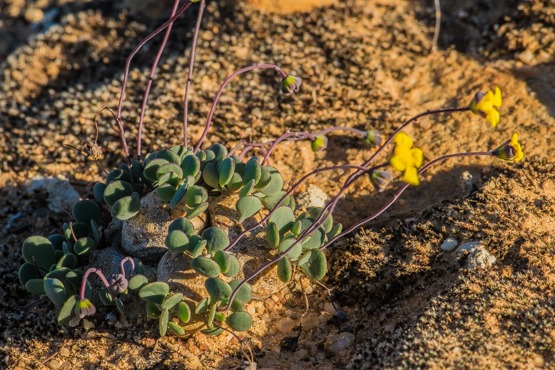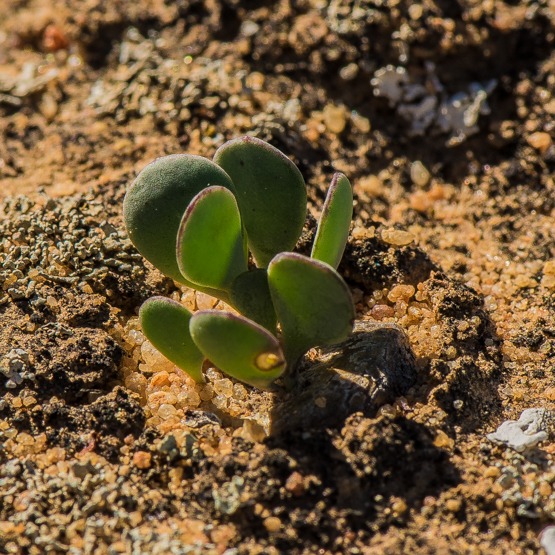Othonna cacalioides is a dwarf compact caudiciform with a flattened potato-like caudex, most of which is below ground. The plant body is broader than tall and to 10 cm across, covered by a tough leathery bark of a muted brownish or orangish colour.
The branches are reduced to low lumps with thickish, 2-2.5 cm long, and 0.8-1 cm wide leaves (only present in winter and spring).
From May to October, the plants produce inflorescences with 2-8 cm long stalks, each with up to six small, yellow flower heads.
Usually, the plants are found in shallow rock pans with a thin layer of coarse sand in sandstone pavements in the Northern and Western Cape (Bokkeveld Mountains to Gifberg). Sometimes they occur in patches of greyish moss. In both cases, they are often and hard to find, especially when not in leaf.
Although they are slow-growing and difficult to keep alive, this seems to make them only more attractive to collectors.
P.S.
In 2012 the Swedish botanist Bertil Nordenstam created a new genus (Crassothonna) with 13 species, formerly part of Othonna. One of these species (O. carnosa), for nomenclatural reasons, had to be renamed Crassothonna cacalioides. This has unfortunately created quite a bit of confusion because many people assume (understandably but wrongly) that this is the new name for Othonna cacalioides.
In short: Crassothonna cacalioides is what used to be called Othonna carnosa and Othonna cacalioides is still Othonna cacalioides.

